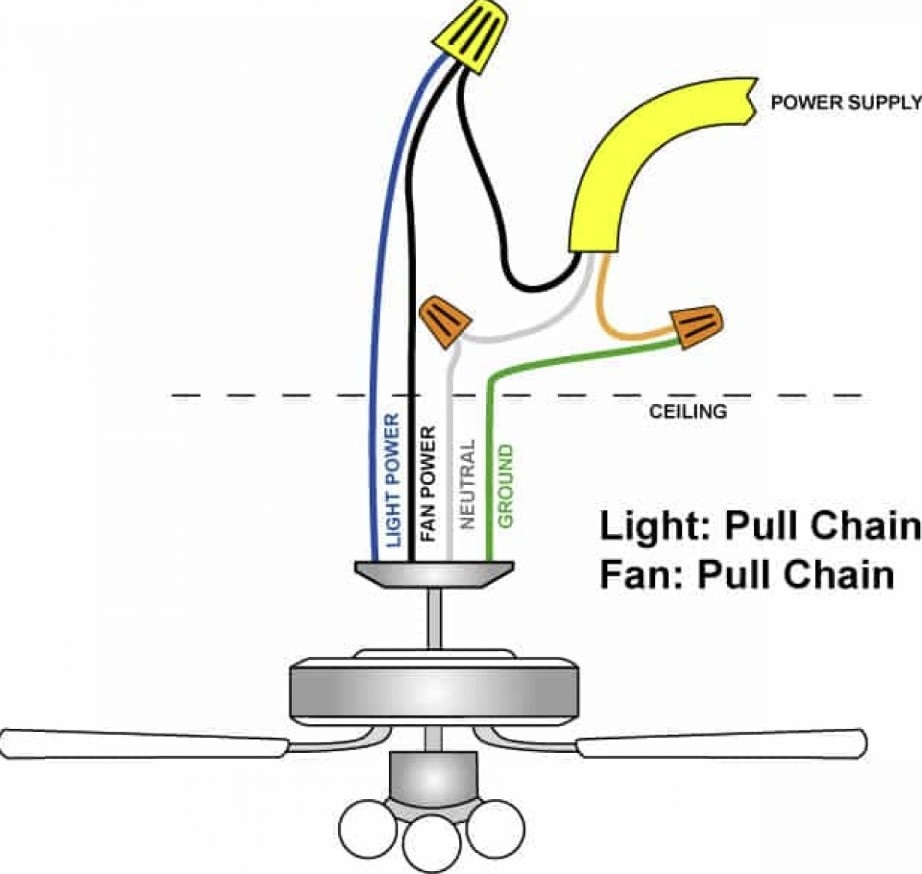Ceiling fans are versatile electrical fixtures that can provide light, circulate cool air, and offer warmth in a room. It is easy to install these devices because many of them come with a user manual. But before doing that, you must first review the safety rules and understand the different types of ceiling fan wire colors.
All wires in a ceiling fan have their specific functions. Each allows a fan to work well and ensures safety by preventing electric surges. While it may seem challenging to wire the device, sometimes it depends on the type of fan you have and how it should operate. Understanding a ceiling fan wire color code will make things easier.

Contents
Ceiling fan wire color code
Some of the most advanced ceiling fans today come with up to four wires. You can also have others with five or six wires, depending on the task it is to perform.
The four ceiling fan wire colors and their functions include:
1. White wire
It is the neutral wire. Its primary function is to complete an electrical circuit for household fans.
When installing the device, connect this wire to an earth ground or any other neutral wire in your home’s electrical wiring.
2. Black wire
It is a hot or live wire. Use it as the power feed for the fan’s outlet or power feed. You can only use the wire in a circuit breaker as the switch leg.
In other words, it is the primary connection that provides current from the switch to the fan’s electrical load or motor.
3. Red wire
You may come across a red wire when wiring a ceiling fan with 4 wires. The red color on fans is for powering the lights. It is a hot wire that comes from the ceiling and hooked up to a wall switch.
When included in your device, it works as a conductor to transmit power to the lighting kit.
4. Green Wire
Depending on your fan, the wire can either be green or copper in color. The color indicates it is a ground wire. Its function is to keep the device from undergoing power surges.
Also, avoid using it as the neutral wire despite connecting to the same bus at the main panel.
How to install a pre-wired ceiling fan with various wires

The first step of installing a ceiling fan is to know the colors, as noted above. That also includes ceiling fan speed wire colors. Once you do that, follow the steps below:
- Start by turning off the power at the mains or circuit breaker box.
- Take the bracket for the ceiling fan box and put all wires from home wiring or ceiling through it. In this case, the colors of the wires are green (ground), white (neutral), black (hot wire), and brown (hot wire).
- Using the screws that came with the unit, attach the bracket on the ceiling.
- Ensure you tighten the bracket on the ceiling well to avoid creating a wobble when the fan spins around.
- Grab your ceiling fan with the blades on and slide it through the groove of the bracket.
- While it rests on the bracket, you will not have to hold it while connecting the wires.
- If your ceiling fan has four wires, check their colors again.
- In this case, consider a fan with green (ground), white (neutral), blue (hot for the fan), and black (hot for lights) wires.
- If you want to run both the light and fan on one switch, twist the blue and black wire from the unit together.
- Hook the neutral and ground wires first. The ground should be coming off of your frame. Now, connect the neutral wires from the ceiling and fan together.
- Hook up the hot wires that you have already twisted to the black wire coming out of the fan.
- When completing your 4 wire ceiling fan switch wiring, remember to connect the black wire to the unit’s black and blue wires. You can also connect the blue wires or the blue to the black wire. If your device does not have lights, the same step applies.
After hooking up all the wires, tuck them back in the bracket and put the faceplate up. Ensure to follow the user manual if you want to wire a ceiling fan with light on a 3-way switch.
Wiring your ceiling fan made easy!
Before you install a ceiling fan, the first step is to understand the wire colors. Once you know the various ceiling fan installation wire colors, it will be easier for you to identify the functions of each wire. If you are unsure, hire an expert to do it for you.
Related guides
